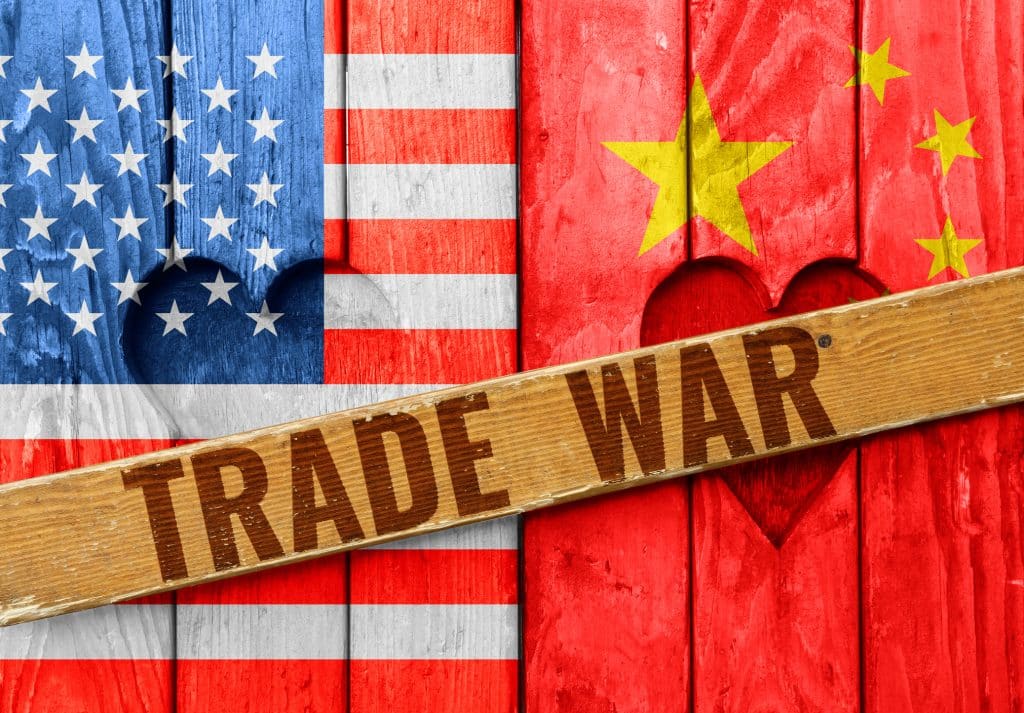
Donald Trump’s victory in the election renews questions about pharmaceuticals’ reliance on overseas production and China specifically. Is it bluster, or are supply chains about to get a shock?
So, it begins – again. The US China trade war was a central feature of President Trump’s first presidency – before the Covid crisis did a much more thorough job of disrupting trade. Given China’s role as a key source of active ingredients, it was a significant worry for the pharmaceuticals industry, even if most of those fears proved unfounded.
But is the industry ready for round two?
With Trump’s convincing victory in the US election, tariffs are back on the agenda. Again, China is a key focus, with Trump campaigning on a promise of tariffs of 60% or more on imports from China as part of a “national economic renaissance” fostering domestic industry.
However, it’s not just China targeted, with Trump seeming to promise blanket tariffs across US imports, valued at $3.8 trillion last year, according to the Bureau of Economic Analysis.
As he said on the campaign trail: “We're going to have 10 to 20% tariffs on foreign countries that have been ripping us off for years. Some might say it's economic nationalism. I call it common sense.”
Or, as he has put it on other occasion: “To me, the most beautiful word in the dictionary is ‘tariff’, and it’s my favourite word.”
Trump's tariffs: a devasting economic impact?
Were such tariffs universally applied; the effect would vary significantly by country. In Europe, it could be Ireland, not the UK, potentially hardest hit. Exports to the US from the Republic account for more than 10% of the country’s GDP, against 2% for the UK.
Even for the latter, though, the hit would be substantial – a “doomsday scenario”, as Liam Byrne, Labour chair of the House of Commons Business and Trade Committee put it.
“If Trump does go ahead, that is going to have a really significant impact on economic growth, inflation and interest rates in the UK,” he told the Today programme.
“Actually, it will probably set off a trade war more globally,” warned the other guest on the programme, former UK ambassador to the US Lord Darroch, who predicted retaliatory tariffs on US exports from Europe and elsewhere.
According to the National Institute of Economic and Social Research Growth, the UK’s already fairly gloomy economic outlook would be significantly darker as a result. Growth in 2025 and 2026 would halve, and inflation could be as much as three to four points higher, with interest rates up two to three points, too.
“The UK is a small, open economy and would be one of the countries most affected,” warned Ahmet Kaya, a NIESR economist.
Hopes for a trade deal
Optimists can take succour from several sources.
Some hope the realities of office will temper Trump’s ambitions and that the reality of the impact on US consumers and businesses will constrain him. After all, regardless of their favourite words, politicians campaign in poetry but govern in prose. As Darroch noted, though, even the experience of the last Trump presidency argues he’s unlikely to abandon his plans.
At a national level, some also hope that individual countries, such as the UK, may be exempt. New Jersey governor Phil Murphy - a Democrat - says he believes Mr Trump may consider not including the UK in his tariff plans.
“[T]he UK is not the target,” the head of transatlantic business trade groupBritishAmerican Business Duncan Edwards told Sky News. Like others, he also points to the opportunity to revive talks of a US-UK trade deal that stalled four years ago with Trump’s loss to President Biden.
Meanwhile, New Jersey Governor Phil Murphy also told the network he believed Trump may consider exempting the UK.
“But if I’m China, I'm fastening my seatbelt right now,” he added.
Will pharma continue to dodge the tariffs?
China, of course, brings the discussion firmly back to pharmaceuticals.
In Trump’s first term, the industry largely escaped the tariffs in 2019, and then the pandemic hit so there was little appetite for anything to further restrict scarce supplies.
US dependence on the China has increased since then. The US imported $6.95 billion of pharmaceuticals from China in 2022, up more than eightfold from the previous year. While that declined as the pandemic retreated, they remained much higher than historically in 2023.
This could function as an argument against tariffs. There is a strong argument that restricting pharmaceutical imports from China would be a self-inflicted wound – hurting US consumers and research.
However, there’s also increasing – and not entirely displaced – discomfort with the growing reliance on China and, to a lesser extent, India within the US. Together, the countries accounted for 58% of pharmaceutical imports by weight last year and a third of America’s total annual spending on pharmaceuticals. And as reliance on China has grown, domestic production has withered.
As the US Food and Drug Administration (FDA) noted as long ago as long ago as 2019: “The United States, through its investment in biomedical research, has become a world leader in drug discovery and development, but is no longer in the forefront of drug manufacturing.”
A revival for US production?
The indications are that Trump wants to address this as part of his phasing in of a complete ban on imports of key categories of Chinese-made goods like electronics, steel and pharmaceuticals.
As far back as February 2023, Trump was already outlining his vision of a high-tariff future. As he promised: “We will revoke China’s Most Favored Nation trade status and adopt a four-year plan to phase out all Chinese imports of essential goods – everything from electronics to steel to pharmaceuticals.”
It would be unwise to dismiss this as campaign bluster for two reasons.
First, the worries about the dependence on China are, at least to some extent, well placed. According to domestic producer campaign group the CPA (Coalition for a Prosperous America), there are 100 drugs prescribed in the US whose supply is dependent on a single factory in China.
Second, while there may not be consensus over tariffs (although Biden’s administration kept existing Chinese tariffs in place), both sides of Congress share worries about pharma’s dependence on overseas production.
It was the Biden administration that started with its 100-day supply chain review report in 2021 and followed on with the first government Essential Medicines Supply Chain and Manufacturing Resilience Assessment the following year. Expanding onshore or nearshore production capacity was among the key strategies it proposed for strengthening resilience to avoid shortages. Meanwhile, moves to strengthen requirements around supply chain transparency in the sector through the MAPS Act introduced in the US Senate have gained bipartisan support.
Indeed, Trump has been explicit that his pharma policy is not simply about protecting domestic production and stopping what he sees as the abuse of foreign exporters. Returning production of essential medicines to America is essential “to end Joe Biden’s pharmaceutical shortages”, he has argued.
“This is not just a public health crisis; it’s a national security crisis,” he said. “This is a matter of tremendous urgency. American lives are on the line, and it will be one of my top priorities as President. It will also create countless new American jobs.”
An early promise of his campaign was, therefore, to restore Executive Order 13944, dated from August 6, 2020. This directed the FDA to identify a list of essential medicines necessary to have available at all times to ensure sufficient and reliable, long-term domestic production and “to minimise potential shortages by reducing our dependence on foreign manufacturers of these products”.
No escaping the demand for supply chain clarity
How much of his campaign agenda Trump will ultimately be able to implement, how soon, and in what way remains highly uncertain. But at the very least, it seems certain there’s to be no let-up in the intensifying focus from government on pharma supply chains.
And where the US leads, Europe often follows. Around the world, governments are saying it’s time for transparency.
Whether it’s to answer government calls to strengthen supply chain resilience, have clear data to make the case for continuing to source oversees, or simply to be able to react effectively and quickly to a more volatile, unpredictable future, visibility of the supply chain has never been more needed.
Solutions such as SCAIR® can help.
Bringing clarity around dependencies, critical supply points, concentrations and values at risk, SCAIR® provides essential insights for better decisions. Whatever the Trump presidency may bring, pharma businesses can already be building a more resilient future for themselves and their customers.

